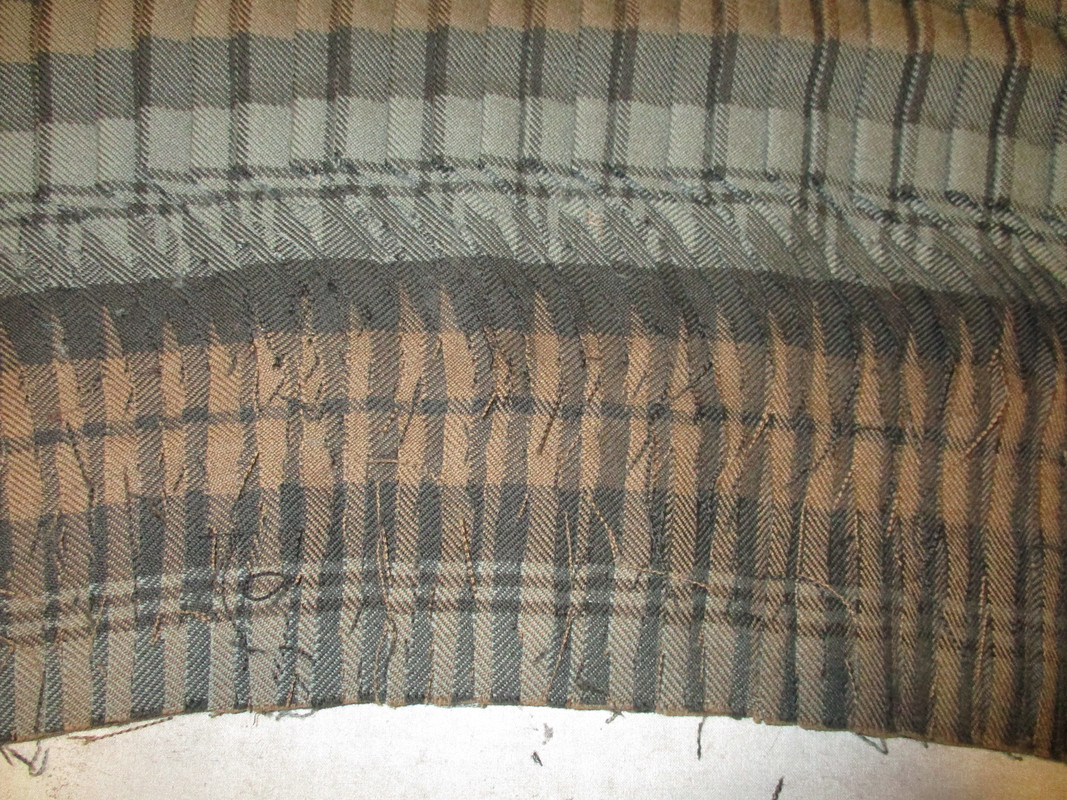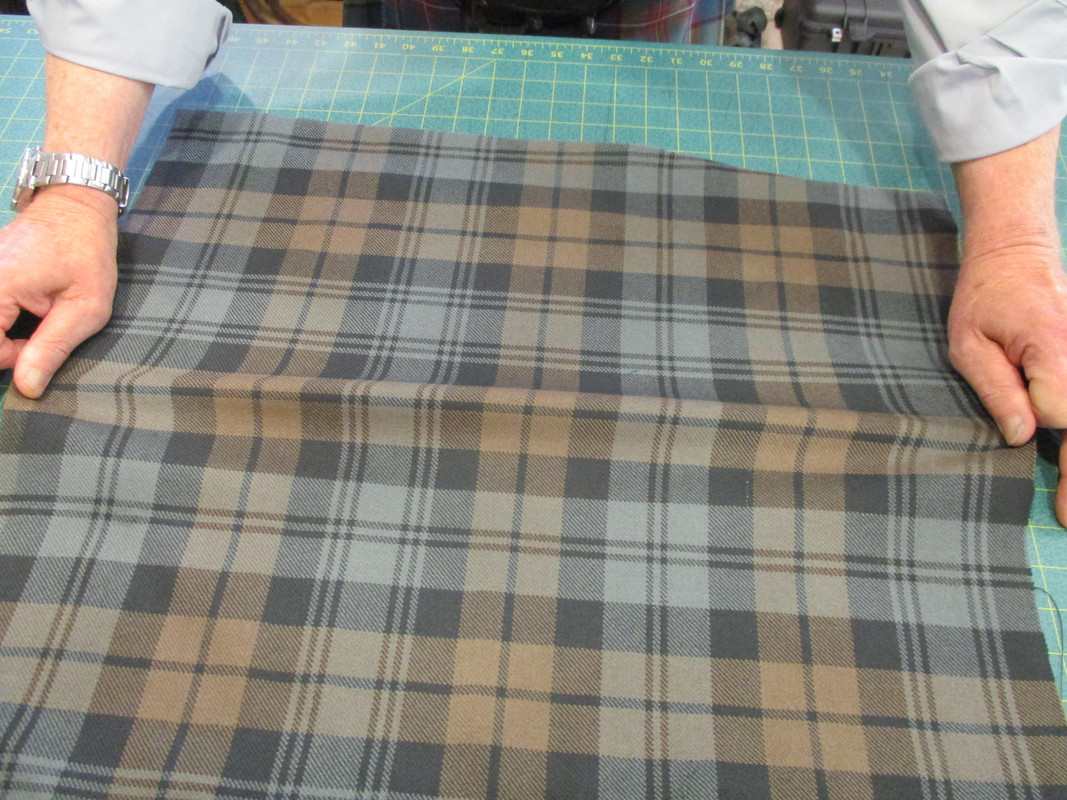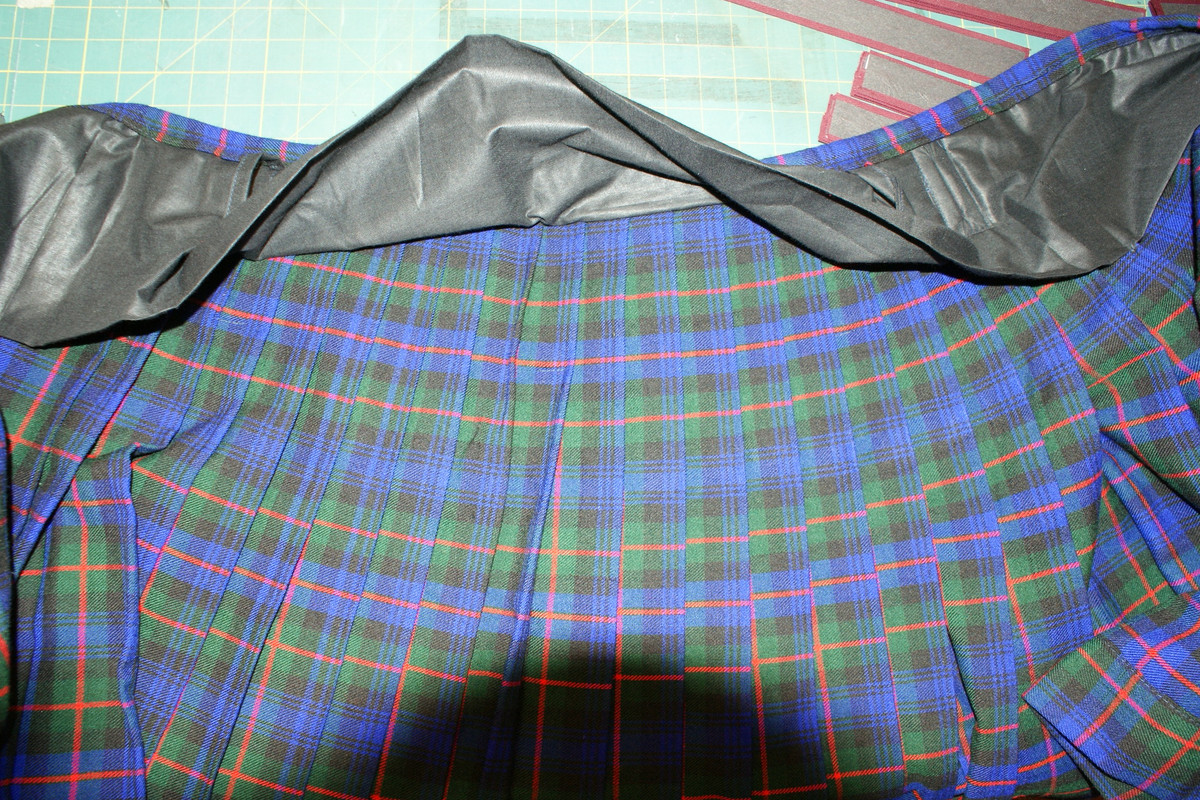The outer fabric that the kilt is made from is one consideration in choosing a kilt. But that is not the only criteria that you need to make your selection.
The construction methods used are actually far more important.
It is quite common to call a ladies Tartan pleated skirt a kilt because it is made from Tartan but a ladies skirt is constructed like a skirt, not a kilt.
It is quite common for the casual style and the MUG style garments to be called kilts but they too are constructed differently.
The Iconic kilt worn by the military and by pipe bands is perhaps the most complex and structured garment today. They are made the way garments were made in the past before the advent of blue jeans and mass production.
Inside a kilt is a liner. Many people think that this is put in there to keep the kilt clean. Well, if that were true then it would be removable and washable.
Some think that the liner is there to give a smooth surface that does not itch against the skin.
In fact the liner is there because there are construction details built into the kilt that would be unsightly if not covered.
The pleats in the back of a kilt can become quite thick. What we call 'pillow butt'. To keep the back of the kilt thin and prevent pillow butt and excess sweating, we cut-away the excess fabric.
But as you can imagine this significantly weakens the garment.
We already have a garment made from very supple twill weave fabric.
Without some form of strengthening built into the kilt this type of fabric will stretch out of shape and not remain the same size.
There is also fact that hand stitching is inherently weaker than machine stitching.
So, built into the back of an Iconic (and I include the Contemporary style of kilt that I make) are strengthening elements. These include a stripe called stabilizer which acts like a waistband. This is where the straps and buckles are sewn and resist the garment from stretching when strapped on.
There is also full floating interfacing. This give vertical body to the kilt, and allowing the other fabric to drape and swish naturally.
All of this 'stuff' is then hidden from view by a light fabric liner.
It is quite common for the kilts made in the Middle East to have a liner. But if you lift that liner you will find that there are none of these internal elements. The only reason that the liner is there is because the iconic kilt has one.
Yes true Marton Mills fabric is a miracle fabric. Rocky and I both use it, not because it is less expensive, but because it offers some features not available with wool.
It is totally machine washable and dryable.
It will hold a pleat crease almost permanently.
It is almost totally wrinkle free.
And the Teflon coating makes it very stain resistant.
But please, take a look at the construction of the garment and not the fabric alone. A well constructed garment like Rocky and I make is a joy to own and wear. Quality construction will allow many years of wear and a proper fit will insure that the kilt swishes and drapes well.


















Bookmarks